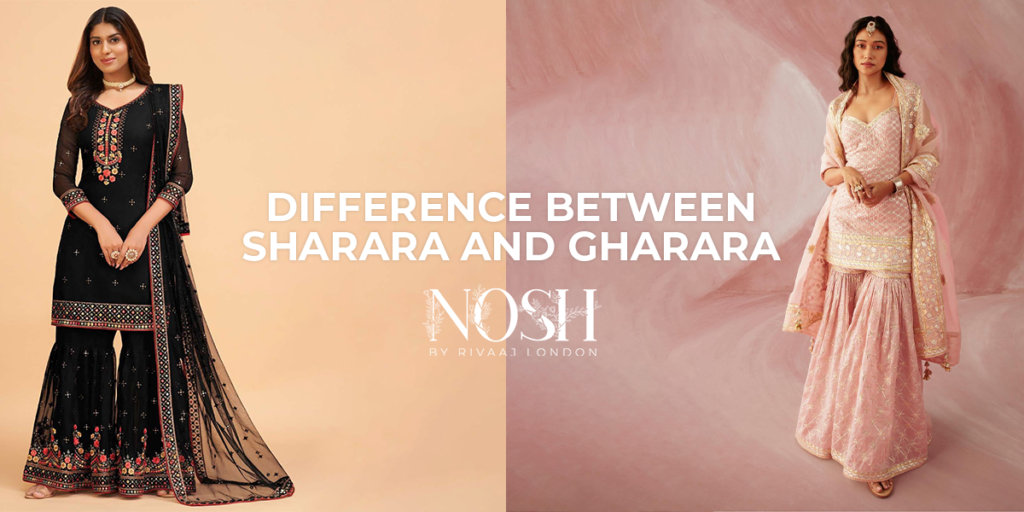No products in the cart.
- Contact Us
- Shipping Policy
Sharara and gharara are two kinds of dress specially designed for women in the South Asia region. They are rather similar in cut, which is flared at the bottom, resembling a skirt or wide-legged trousers. Regardless, some differences put them in different categories and it is such differences that are discussed here. In this article, we will look into the details concerning the history of both shararas and ghararas.

Shararas and ghararas both have historical roots traceable back to the Mughal Era of South Asia in the 19th century. These were famous among the royal women because it was believed that the pearls were signs of wealth and richness. Slowly and gradually these garments are accepted by women of all classes of South Asia society.
The Sharara is an outfit that comprises a flared bottom and a long tunic or the kameez part of the dress. The bottom has multiple pleats at the waist level to make it fuller around the stomach as can be seen from the picture. These pleats are fastened with intricate embroidery or other embellishments, and indeed it is a beautiful attire for the bride or others who are to wear garments during weddings and other festivities.
Characteristics of Sharara
A gharara is slightly different from a sharara in its cut and appearance but shares the flare at the bottom. While the sharara has folds on the outer side of the skirt and below the knee there is a fold on the inner side of the skirt and only one fold is present at the knee level. These darts are brought to the ankles to make this garment look slightly more fitted at the leg area. The flare at the bottom of the attire is also wider than in the case of sharara.
While both shararas and ghararas have similar flared bottoms, some key differences set them apart:
Number of pleats: Shararas are sewn with many folds on all sides whereas ghararas have one line of folds at the knee length only.
Volume and shape: Ghararas are slightly more sheer; the pleats are drawn together at the ankles while shararas are more even in flaring.
Fabrics used: It can usually be observed that shararas are lighter in weight; however, ghararas are made of somewhat heavier fabric to offer a rich appearance.
Design By Digital Marketing Agency
WhatsApp us